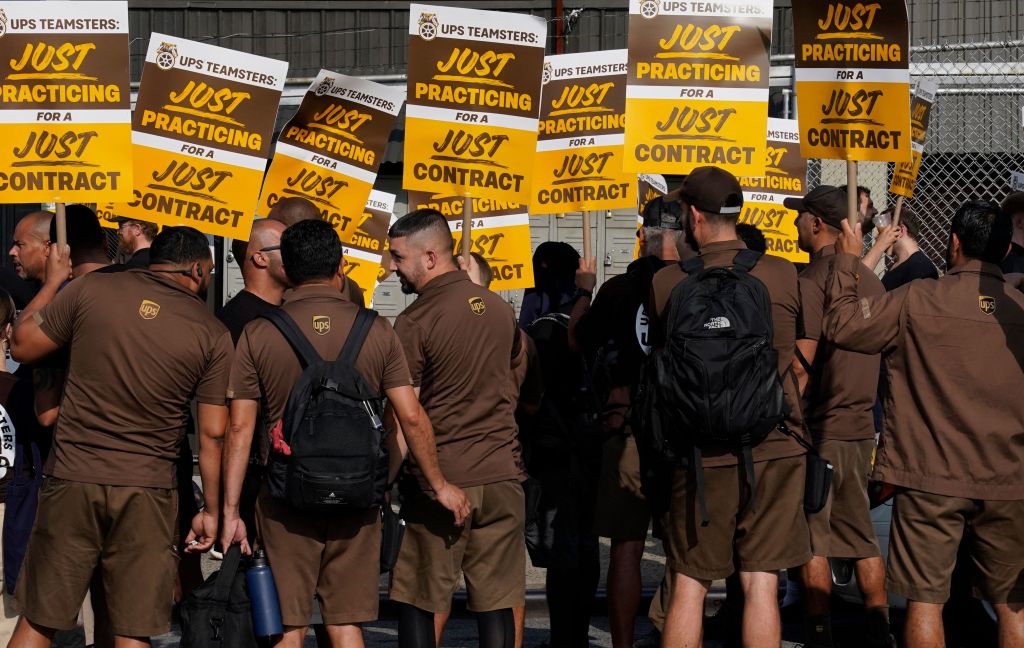California’s Senate has passed AB5, a landmark bill that would force contractors to classify gig workers as employees and potentially remake the business models of companies like Uber, Lyft, and DoorDash. But with app companies committing tens of millions of dollars to effectively overturn those protections, the fight is far from over.
The fight to get here has been long. Uber and Lyft failed to negotiate back-room deals with California unions that proposed alternatives to employee classification and compensation. The companies went so far as to co-write an op-ed titled, “Uber, Lyft, ready to do our part.” When those alternatives were loudly rejected, Uber and Lyft started paying drivers to protest against being paid like employees. Meanwhile, driver groups such as Gig Workers Rising, Mobile Worker Alliance, and Rideshare Drivers United, held countless protests and actions that culminated in a 600-mile caravan across California.
Videos by VICE
All of this has led to an unholy alliance between Uber, Lyft, and DoorDash, with each company pledging $30 million to push a ballot initiative meant to undermine AB5’s reclassification of their contractor workforce. In late August, Uber and Lyft attempted to negotiate a proposal that included a minimum wage of $21 an hour while drivers have a passenger, as well as “injured worker protection,” paid sick and family leave, and a form of sectoral employee bargaining which would allow a driver association “in partnership with state lawmakers and labor groups” but run by the companies themselves to represent ride-share drivers’ interests. Tony West, Uber’s chief legal officer, implied that a ballot measure would not include everything offered in the negotiations, however.
When you do the math, the Uber and Lyft minimum wage proposal pays less than what was achieved in New York City last year, and potentially less than California’s minimum wage. In New York City, pay regulations established a minimum pay rate of $27.86 an hour, with or without a passenger, since New York drivers spend 40 percent of their time either waiting for a passenger or driving between pickups. Across six US metro areas, that number fluctuates between 33 and 42 percent, according to a study commissioned by Uber and Lyft. That puts the actual proposed hourly rate granted by California’s Uber and Lyft-backed ballot initiative between $12.18 and $14.07.
“To exclude a driver’s working time between trips is like only paying a call center worker for their time on a call,” said Brendan Sexton, Executive Director of the Independent Drivers Guild, in a statement. “Imagine a call center worker was paid $30 for a six-hour shift, but only three of those hours were actually on a phone call. We would call that $5 per hour, but the proposal would call it $10 per hour.”
This sort of sleight-of-hand is only a preview of what is to come. Uber has a long history of embracing “guerilla tactics” ranging from programs dedicated to skirting laws and regulations to leaving markets that adopted rules the company didn’t want to adhere to. Everything is at stake for Uber, Lyft, and DoorDash, who all see AB5 as an existential threat to their unsustainable, unprofitable business models.
When it comes to paying gig workers a living wage, it is actually cheaper for these companies to each spend tens of millions to fight a bill that would cost them hundreds of millions in some of their largest markets. And while it’s unclear whether the rest of the country will follow AB5’s example, companies like Uber and Lyft could lose billions on the stock market if investors fear that the jig is up.




